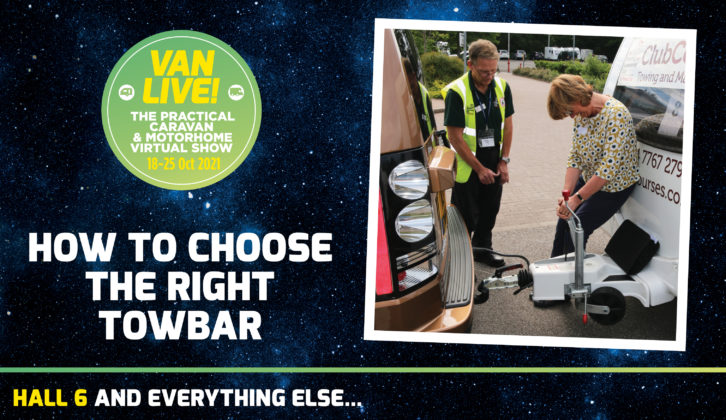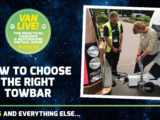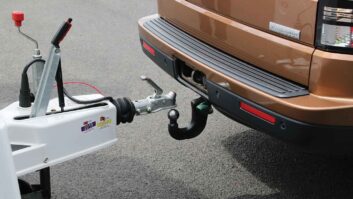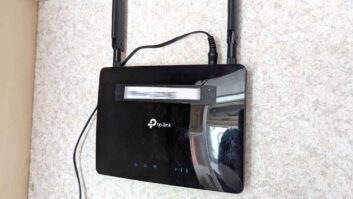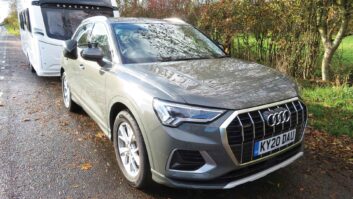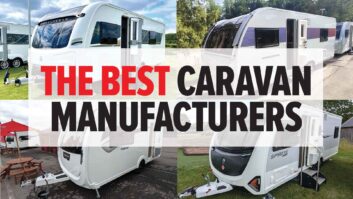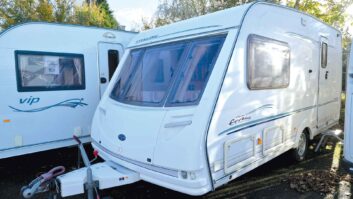Your towbar forms the vital connection between car and caravan, so it’s important to find the one that’s right for your outfit. John Sootheran is your guide
Think of your towbar not as a pricey lump of pig-iron, but as the cost-effective gateway to touring freedom. Choosing and fitting the right one is really important, so here’s everything you need to know before you make your decision.
Towbar types
The standard towball measures 50mm in diameter and was invented by Franz Knöbel of Westfalia Automotive in 1932. This is now the standard around the world.
The ball-and-cup design allows a high degree of swivelling and articulation, combined with a very secure connection. This makes it ideal for pulling trailers, including caravans.
Although the towball itself is a standard design, there are a variety of ways in which it can be attached to the tow vehicle.
Flange towbar
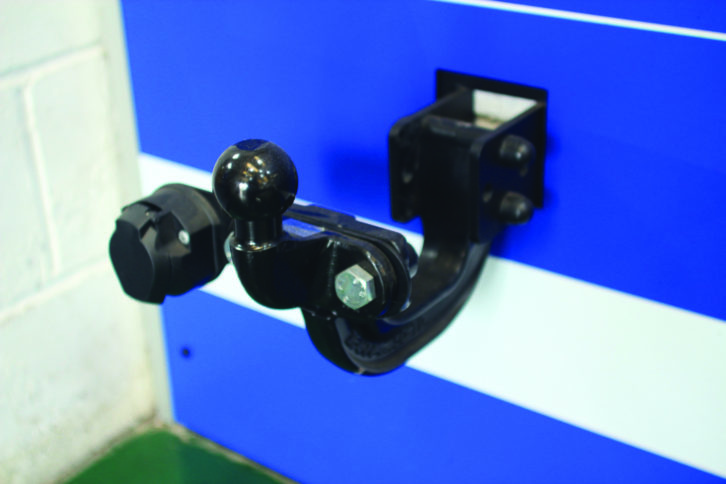 This is the basic towbar design, usually fixed permanently to the back of a vehicle, with the electric socket(s) alongside. The 50mm towball bracket is attached to the towbar frame with two hefty bolts.
This is the basic towbar design, usually fixed permanently to the back of a vehicle, with the electric socket(s) alongside. The 50mm towball bracket is attached to the towbar frame with two hefty bolts.
Flange towbars are simple but effective, and are the lowest-cost towing option. Other accessories, such as bike carriers,
can be attached to the flange plate if the ball is unbolted. However, some consider them ugly when fixed permanently in place, potentially spoiling the look of a stylish car.
Swan neck towbar
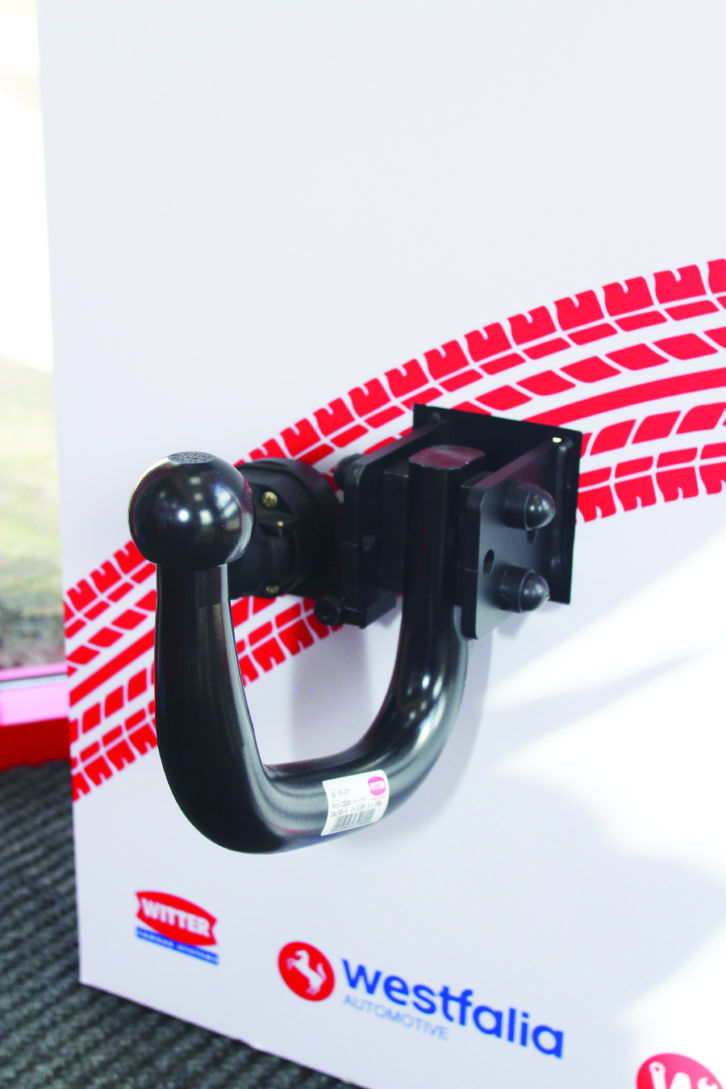 Swan neck towbars usually have the 50mm towball on the end of a long, curved neck (hence the name), which arcs out from under the rear bumper. This often means that the car’s bodywork doesn’t have to be cut, which might be necessary with other towbar designs. They are available
in three formats: permanent, retractable and removable.
Swan neck towbars usually have the 50mm towball on the end of a long, curved neck (hence the name), which arcs out from under the rear bumper. This often means that the car’s bodywork doesn’t have to be cut, which might be necessary with other towbar designs. They are available
in three formats: permanent, retractable and removable.
Detachable towbars
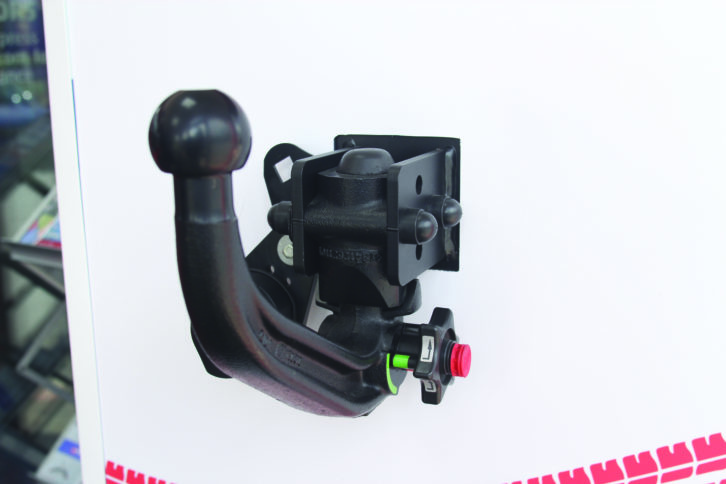 Rather than allowing an unsightly towbar to ‘disfigure’ your beautiful tow car, you could opt to fit a detachable one, which can be removed when not in use.
Rather than allowing an unsightly towbar to ‘disfigure’ your beautiful tow car, you could opt to fit a detachable one, which can be removed when not in use.
Detachable towbars slide into a receptor underneath the rear bumper and click into place. They can be locked to prevent theft. The mechanism tends to be spring-loaded, so after removal, it can be ‘primed’ ready to click back into position for the next use. A green indicator strip ensures that you’ve attached it properly.
Most detachable towbars are the swan neck design, but flange types are available.
Retractable towbars
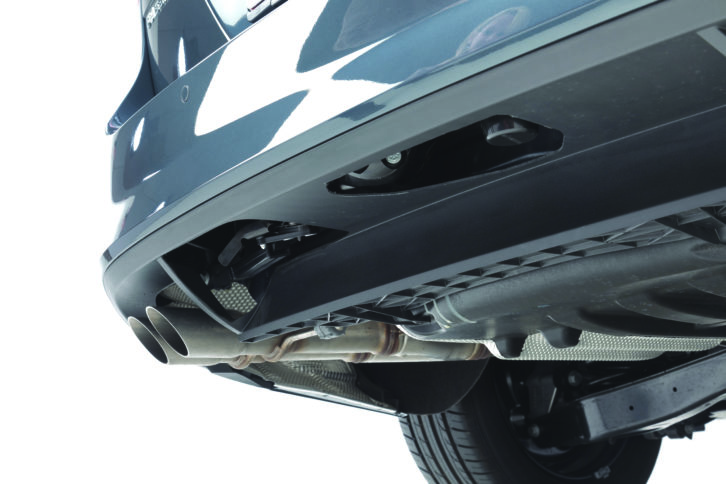 Retractable towbars are permanently fixed to the tow car, but can be neatly folded up, out of sight behind the rear bumper, when they are not in use.
Retractable towbars are permanently fixed to the tow car, but can be neatly folded up, out of sight behind the rear bumper, when they are not in use.
Two types of retractable towbar are available – manual and electronic. Usually, the release mechanism is just inside the vehicle’s boot, where there’s a button to release the towbar.
On the manual version, the towbar swivels down and can then be grabbed and clicked into position.
Fully automated versions of these are electronically powered into position. To retract them, you press a button. Powered ones will return to their starting position automatically, while manual versions drop down and are swung back into the ‘stored’ position under the rear bumper.
Points to consider
Type
Choose the type of towbar you need based on your practical requirements: noseweight, style, cost and extra accessories.
Cost
The price of towbars varies considerably. You can order them from the manufacturer when you buy a new car, although these can cost £1000 or more. However, it might be even more expensive to have them fitted by an automotive main dealer later on.
Buying from a towbar manufacturer can cut costs by up to 50%. Check compatibility with things like ABS and parking sensors on your tow car. It might be worth paying extra to get a towing system that works flawlessly with your car’s electrics.
Electronics
Most tow cars have dedicated wiring kits, which interface with the car’s advanced electrics to ensure all systems are perfectly integrated. Cheaper bypass kits work, but might not integrate fully with your car.
Having fitted the bar and electrics, a technician will plug an electronic device into your vehicle’s diagnostics port, to reprogram the tow car’s ECU, so that it knows when a caravan or trailer is being towed and alters settings appropriately.
This can include turning off the parking sensors and fog lights (they can reflect off the van and distract the driver) when the towbar is in place or a van is attached. Some highly specified cars have their suspension and gearbox settings automatically altered.
Towing sockets
Older vans might still have 7-pin electrical connections. These are valid and safe, but since September 2008, the industry standard has been the 13-pin. The 13-pin socket is better for detachable towbars: it can be swivelled up behind the bumper.
Simple push-and-twist adapters cost from about £10. These convert your 7-pin socket to connect with a 13-pin caravan, or vice-versa.
Caravan sockets can sometimes get out of alignment and won’t plug together. The fix is simple – just buy a £3 alignment tool/protective cover from your local dealer or online. These push into the socket and can be twisted to realign the pins and guides.
Bumper cuts
Fitting a towbar can require bodywork cuts, which can spoil the look of the car, especially when the towball isn’t attached. Choose carefully to minimise ‘plastic surgery’!
One advantage of paying for a factory-fitted removable towbar is that a clip-out panel usually covers the mechanism, so
no bumper cutting is required.
Insurance
You should inform your car’s insurance company if you have a towbar fitted, to ensure that you’re fully covered.
TOWBAR MAINTENANCE
Towbars will normally require minimal maintenance, but some basic aftercare can pay dividends.
• Before use, clean any protective grease or oil off the towball, as this will contaminate the friction pads in your Al-Ko stabiliser. Thinners or white spirit and a clean cloth are ideal for this job.
• Likewise, use fine sandpaper or wire wool to remove any paint finish, as this can have the same effect on your friction pads.
• Make sure you replace the cover on the detachable towbar receptor (the bit fitted to the car) after use, as this will minimise any corrosion and make fitting easier in future.
• Lubricate all moving parts on a detachable or retractable towbar, so they don’t seize up.
• Lubricate the swivelling-socket mount pivot, so it folds easily.
• Keep your locking keys separate and in safe places.
• Regularly check electrical cables for wear/chafing, and socket pins for signs of corrosion. Spray water displacement/penetrating oil or contact cleaner onto the pins and keep them covered when not used.
Towbars on company cars
Fitting a towbar to a company or a leased car is a bit of a grey area. Generally, there is no problem, as long as the unit is professionally fitted and the leasing firm is aware of the modification (it might affect insurance policies).
In the past, I had a towbar fitted to a Lex Autolease VW CC. There were no problems, although I did need a V5 replacement document (Vehicle on Hire Certificate VE103R) so I could order extra numberplates for the caravan and bike rack.
The key is to ensure all relevant firms are aware of the modification, and to use a reputable fitter.
Towbar hitching tips
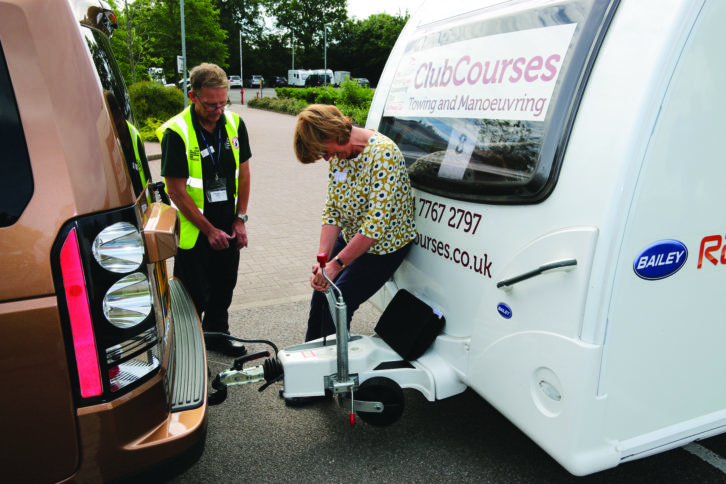
- Keep a cover on your towball to protect it when not in use.
- Check your towbar will work with an Al-Ko stabiliser if one has been fitted. They will require slightly more room around them.
- Ensure that your car towing socket matches your caravan’s configuration (7-pin or 13-pin).
- Check if your towbar fouls on tailgates or spare wheels, or covers fog lights and so on.
- When you are towing, pull forward a few centimetres after reversing, to release the compressed hitch head, otherwise it might spring out when disconnected and this could cause damage to your car bumper. There are also metal guard-plates available to prevent this kind of problem.
- Always remember to lock your removable towbar in place.
- Check if your reversing sensors will be affected by a towbar.
- Bear in mind that the prices you see quoted on websites might not include fitting and electrics. Check before you commit, because this is a significant extra cost.
- Westfalia has developed a very clever rear-light checking system, designed to take the hassle out of towing solo. It is integrated into an expanding range of new towbar fitments, and this range will continue to grow throughout 2020.
You simply turn on the ignition, so the dash lights illuminate, then press the brake pedal twice. The rear lights – road lights, brake lights, left indicator, right indicator, reverse lights, fog lights – will start to illuminate in sequence. This sequence repeats 20 times, giving you ample time to get out of the car and check all of the lights are working.
You just press the brake pedal again to terminate the test. Clever stuff!
You’re in Hall 6 Advice Lounge & Events Theatre at Van Live! See what else is happening on stage, or take me to the Show Guide.
Think of your towbar not as a pricey lump of pig-iron, but as the cost-effective gateway to touring freedom
